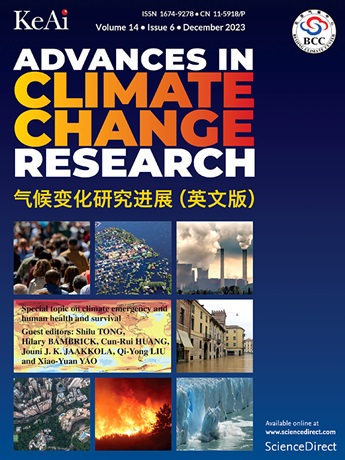Water use in the industrial sector based on the IPAC model under the carbon-neutral transformation path in China
IF 5.2
1区 地球科学
Q1 ENVIRONMENTAL SCIENCES
引用次数: 0
Abstract
To examine the impact of promoting transformative hydrogen-based technologies on water demand in traditional high-energy and high-water-consuming sectors under the carbon-neutral transition, this study investigates the industrial sector transformation path. It compares the water consumption of current production processes with future hydrogen-based and advanced water-saving technologies. By developing a model, the study analyses the water-saving potential of 54 water-saving and hydrogen-based technologies across three water consumption scenarios and evaluates their impact on industrial water use. This study highlights the pivotal role of water-saving technologies in transforming industrial sectors, particularly in the paper and textile industries, where zero-emission technologies have considerably reduced water demand. Water savings in the paper industry are projected to increase from 24.29 Mt in 2025 to 101.44 Mt in 2050, representing an 8.5% increase. In the chemical fibre sector, additional water savings are expected to reach 106.93 Mt by 2050, with an 11.6% increase in water-saving efficiency. Similarly, the textile dyeing and finishing sector is anticipated to achieve an additional water saving of 26.45 Mt by 2050, corresponding to a 17.5% improvement. The findings indicate that the adoption of hydrogen-based technologies will considerably reduce water consumption in traditionally high-water-consuming industries such as steel, synthetic ammonia, ethylene, and methanol. This reduction becomes particularly evident by 2050 under the baseline pathway and low water consumption scenarios, in which the impact of water-saving technologies becomes less prominent. By 2050, water consumption in the steel, ethylene, synthetic ammonia, and methanol industries is projected to decrease to 985.93, 59.11, 242.4, and 268.29 Mt, respectively. These findings highlight the potential of hydrogen-based technologies in advancing water conservation. By 2050, the chemical industry is projected to reduce water stress by transitioning from traditional water-saving technologies to the integration of automation and hydrogen-based solutions.
碳中和转型路径下基于IPAC模型的中国工业用水
为考察碳中和转型下推进转型氢基技术对传统高耗能行业用水需求的影响,本研究考察了工业部门转型路径。它比较了当前生产过程与未来氢基和先进节水技术的用水量。通过建立模型,分析了54种节水和氢基技术在三种用水情景下的节水潜力,并评估了它们对工业用水的影响。这项研究强调了节水技术在改变工业部门方面的关键作用,特别是在造纸和纺织工业,其中零排放技术大大减少了水的需求。造纸行业的节水量预计将从2025年的2429万吨增加到2050年的10144万吨,增幅为8.5%。在化纤行业,到2050年,预计额外的节水量将达到10693公吨,节水效率将提高11.6%。同样,到2050年,纺织染整行业预计将实现2645万吨的额外节水,相当于17.5%的改善。研究结果表明,采用氢基技术将大大减少传统高用水量行业的用水量,如钢铁、合成氨、乙烯和甲醇。到2050年,在基线路径和低用水量情景下,这种减少尤为明显,在这种情况下,节水技术的影响变得不那么突出。到2050年,钢铁、乙烯、合成氨和甲醇行业的用水量预计将分别减少到985.93万吨、59.11万吨、242.4万吨和268.29万吨。这些发现突出了氢基技术在推进节水方面的潜力。到2050年,化学工业预计将通过从传统节水技术过渡到自动化和氢基解决方案的集成来减少水资源压力。
本文章由计算机程序翻译,如有差异,请以英文原文为准。
求助全文
约1分钟内获得全文
求助全文
来源期刊

Advances in Climate Change Research
Earth and Planetary Sciences-Atmospheric Science
CiteScore
9.80
自引率
4.10%
发文量
424
审稿时长
107 days
期刊介绍:
Advances in Climate Change Research publishes scientific research and analyses on climate change and the interactions of climate change with society. This journal encompasses basic science and economic, social, and policy research, including studies on mitigation and adaptation to climate change.
Advances in Climate Change Research attempts to promote research in climate change and provide an impetus for the application of research achievements in numerous aspects, such as socioeconomic sustainable development, responses to the adaptation and mitigation of climate change, diplomatic negotiations of climate and environment policies, and the protection and exploitation of natural resources.
 求助内容:
求助内容: 应助结果提醒方式:
应助结果提醒方式:


